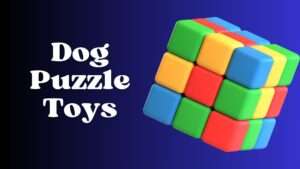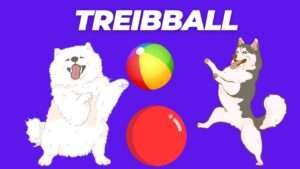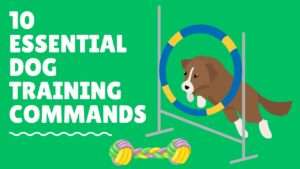In the bustling world of canine companionship, mental stimulation stands as a cornerstone for a happy and healthy dog.
Beyond just physical exercise, providing mental stimulation for your furry friend is paramount to their overall well-being.
But what exactly does mental stimulation entail? How can you ensure your dog receives an adequate amount?
Let’s delve into the world of mental stimulation for dogs and uncover all you need to know to keep your canine companion sharp, engaged, and thriving.
Contents Overview
Preliminary Summary
In the vibrant tapestry of canine companionship, mental stimulation emerges as a vital thread, weaving together the fabric of a dog’s well-being.
Far beyond the realm of mere entertainment, mental stimulation is the cornerstone upon which a happy and fulfilled dog stands.
It encompasses a rich array of activities designed to ignite their curiosity, challenge their intellect, and nourish their soul.
Mental stimulation for dogs isn’t just about keeping them busy; it’s about fostering a dynamic partnership of discovery and growth.
It’s about embarking on a shared adventure where each puzzle solved, each trick mastered, deepens the connection between human and canine.
In essence, mental stimulation isn’t just a luxury for our furry friends—it’s a fundamental necessity, a pathway to a life brimming with vitality, joy, and endless possibilities.
Definition of Mental Stimulation for Dogs
Mental stimulation involves engaging your dog’s brain in activities that challenge their cognitive abilities, problem-solving skills, and sensory perceptions.
It encompasses a variety of activities designed to keep your dog mentally engaged and fulfilled.
Benefits of Mental Stimulation for Dogs
Mental stimulation is more than just a fun activity for dogs; it’s a vital component of their overall well-being.
Engaging your canine companion in activities that challenge their mind offers a plethora of benefits, ranging from behavioral improvements to enhanced cognitive function.
Let’s explore the numerous advantages that mental stimulation can provide for your furry friend:
Preventing Boredom and Destructive Behaviors
- Mental stimulation keeps dogs engaged and entertained, preventing boredom-induced behaviors such as excessive barking, chewing, or digging.
- By providing stimulating activities, you offer an outlet for your dog’s energy and curiosity, reducing the likelihood of destructive behaviors stemming from under-stimulation.
Enhancing Cognitive Function
- Engaging in mentally stimulating activities exercises your dog’s brain, improving cognitive function and problem-solving abilities.
- Activities like puzzle toys, training sessions, and interactive games challenge your dog’s mind, helping to keep them sharp and mentally agile.
Alleviating Stress and Anxiety
- Mental stimulation can serve as a form of enrichment, helping to alleviate stress and anxiety in dogs.
- Engaging in stimulating activities redirects your dog’s focus and provides a sense of accomplishment, promoting relaxation and emotional well-being.
Building Confidence and Self-Esteem
- Successfully overcoming mental challenges or mastering new skills boosts your dog’s confidence and self-esteem.
- Positive reinforcement during training sessions or interactive play reinforces their sense of accomplishment and strengthens the bond between you and your dog.
Fostering Physical and Mental Health
- Mental stimulation complements physical exercise by providing a holistic approach to your dog’s health and well-being.
- Keeping your dog mentally stimulated contributes to their overall happiness and fulfillment, leading to a healthier and more balanced lifestyle.
Strengthening the Bond Between You and Your Dog
- Engaging in mentally stimulating activities with your dog fosters a stronger bond and sense of trust between you.
- Sharing these experiences deepens the connection and communication between you and your canine companion, enhancing your relationship.
Promoting Lifelong Learning and Adaptability
- Dogs thrive on learning and exploration, and mental stimulation offers opportunities for continuous growth and development.
- Regular engagement in stimulating activities helps dogs adapt to new challenges and environments, promoting lifelong learning and adaptability.
Providing Enrichment and Variety
- Mental stimulation adds variety and excitement to your dog’s daily routine, preventing monotony and promoting a fulfilling lifestyle.
- Introducing new activities and experiences keeps your dog curious and engaged, enriching their lives both mentally and emotionally.
In conclusion, mental stimulation is not only enjoyable for dogs but also essential for their overall health and happiness.
By incorporating stimulating activities into your dog’s routine, you can provide them with countless benefits that contribute to a fulfilling and enriching life.
So, the next time you interact with your furry friend, remember the importance of engaging their mind as well as their body.
Ways to Provide Mental Stimulation for Dogs
Mental stimulation is a crucial aspect of your dog’s well-being, keeping their mind sharp and preventing boredom-induced behaviors.
Fortunately, there are numerous ways to engage your canine companion’s brain and provide the mental enrichment they need.
Here’s a comprehensive guide to various methods of providing mental stimulation for your furry friend:
Interactive Toys:
- Invest in puzzle toys, treat-dispensing balls, or interactive feeding devices that require your dog to problem-solve to access treats or food.
- Rotate the toys regularly to keep them engaging and prevent your dog from becoming bored with the same activities.
Training Sessions:
- Engage your dog in obedience training, trick training, or agility exercises to challenge their mind and teach them new skills.
- Use positive reinforcement techniques such as treats, praise, and play to keep training sessions fun and rewarding for your dog.
Scent Work:
- Dogs have a keen sense of smell, making scent work an excellent mental stimulation activity.
- Hide treats or toys around the house or yard and encourage your dog to use their nose to find them.
- Gradually increase the difficulty by hiding items in more challenging locations or introducing new scents.
Food Enrichment:
- Make mealtime more engaging by using food puzzle toys or DIY enrichment activities.
- Hide treats or kibble in interactive toys or scatter them around the house for your dog to find.
- Get creative with homemade frozen treats or stuffed Kong toys to provide a tasty mental challenge.
Interactive Games:
- Play interactive games with your dog, such as hide-and-seek or fetch a frisbee.
- Hide behind furniture or in another room and call your dog to come find you, or hide toys for them to seek out.
- Engage in tug-of-war or gentle wrestling sessions to stimulate your dog both mentally and physically.
Novel Experiences:
- Introduce your dog to new environments, people, and animals to stimulate their senses and keep them curious.
- Take them on regular outings to dog-friendly parks, beaches, or hiking trails to provide new sights, sounds, and smells.
- Enroll them in doggy daycare or arrange playdates with other friendly dogs to promote socialization and mental stimulation.
DIY Brain Games:
- Create homemade brain games using household items, such as hiding treats under cups or placing treats inside empty toilet paper rolls and folding the ends.
- Teach your dog new tricks or commands, such as fetching specific items or mastering agility obstacles made from household objects.
Interactive Apps and Games:
- Explore interactive apps or digital games designed specifically for dogs, featuring activities such as virtual fetch, puzzles, or simulated scent work.
- Supervise your dog while using digital devices and ensure they are not spending excessive amounts of time in front of screens.
Enriched Walks:
- Dog walking is essential for keeping your furry friend happy and healthy. Make walks more mentally stimulating by varying the route, incorporating sniffing breaks, and introducing new environments.
- Allow your dog to explore natural elements such as fallen leaves, tree stumps, or streams to engage their senses and provide mental enrichment.
Rotate and Combine Activities:
- Keep your dog engaged and prevent boredom by rotating through different mental stimulation activities regularly.
- Combine multiple activities into a single session, such as incorporating obedience training into a scent work or interactive toy session.
Incorporating a variety of mental stimulation activities into your dog’s routine ensures they receive the enrichment they need to thrive both mentally and emotionally.
Experiment with different methods to discover what resonates most with your canine companion, and enjoy the bonding experience that comes with engaging their curious minds.
By providing regular mental stimulation, you’ll be helping your dog lead a happier, healthier, and more fulfilling life.
Tailoring Mental Stimulation
Every dog is unique, with individual personalities, energy levels, and interests. Tailoring mental stimulation activities to suit your dog’s specific needs is essential for ensuring their overall well-being and happiness.
Let’s explore how to customize mental stimulation for your furry friend, taking into account factors such as personality, breed, and learning style.
Understanding Your Dog's Personality and Preferences
1- Observation
Take the time to observe your dog’s behavior, interests, and reactions to different stimuli. Pay attention to what activities they enjoy most and which ones they find challenging or rewarding.
2- Personality Traits
Consider your dog’s personality traits, such as whether they are outgoing and adventurous or more reserved and cautious. Tailor activities to align with their temperament and comfort level.
3- Preferences
Determine your dog’s preferences when it comes to toys, treats, and activities. Some dogs may prefer interactive toys that dispense treats, while others may enjoy scent-based games or puzzle-solving challenges.
Factors to Consider When Tailoring Mental Stimulation
Breed Characteristics:
- Different dog breeds have distinct traits and tendencies that influence their preferences and abilities. Research your dog’s breed to understand their instincts and tendencies.
- For example, herding breeds may enjoy activities that involve chasing and herding, while scent hounds may excel in scent-based games and tracking exercises.
Energy Level:
- Consider your dog’s energy level when selecting mental stimulation activities.
- High-energy breeds may require more challenging and physically demanding activities to keep them engaged, while low-energy dogs may prefer gentler, less strenuous activities.
- Consider your dog’s energy level when selecting mental stimulation activities.
Age and Health:
- Take into account your dog’s age and health status when planning mental stimulation activities.
- Senior dogs or those with mobility issues may benefit from low-impact activities, while younger dogs may enjoy more vigorous play and exercise.
- Take into account your dog’s age and health status when planning mental stimulation activities.
Learning Style:
- Determine your dog’s learning style, whether they are visual, auditory, or tactile learners.
- Tailor training methods and activities to align with their preferred learning style for optimal engagement and success.
- Determine your dog’s learning style, whether they are visual, auditory, or tactile learners.
Tips for Tailoring Mental Stimulation Activities:
Start Slowly
Introduce new activities gradually, allowing your dog to acclimate and build confidence over time. Begin with simple tasks and gradually increase the difficulty as your dog progresses.
Be Flexible
Be open to adjusting activities based on your dog’s feedback and preferences. If they show interest in a particular activity, explore different variations or levels of difficulty to keep them challenged and engaged.
Mix It Up
Keep mental stimulation activities varied and exciting by rotating toys, games, and training exercises regularly. This prevents boredom and ensures that your dog remains mentally stimulated and motivated.
Reward Success
Use positive reinforcement to reward your dog for their efforts and achievements during mental stimulation activities. Whether it’s praise, treats, or playtime, positive reinforcement strengthens the bond between you and your dog and reinforces desired behaviors.
Bottom Line
In the realm of dog care, mental stimulation stands as an essential component for a fulfilling and enriching life. By incorporating a variety of stimulating activities into your dog’s routine, you can ensure they remain sharp, engaged, and content.
From interactive toys to sensory experiences, the possibilities for mental stimulation are endless.
So, embrace the journey of keeping your canine companion’s mind active and thriving, and watch as your bond with them grows stronger with each stimulating adventure.
































+ There are no comments
Add yours